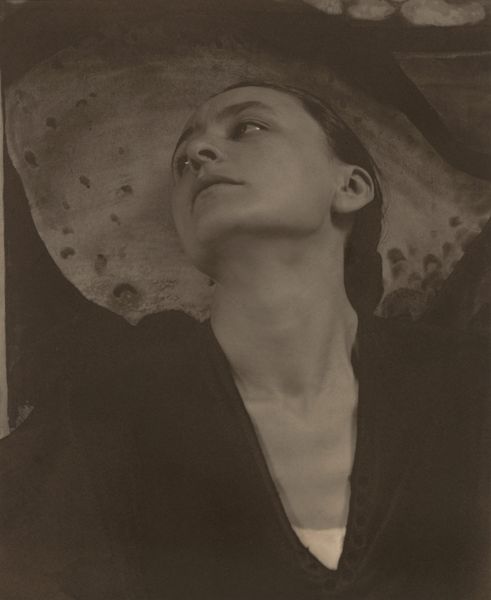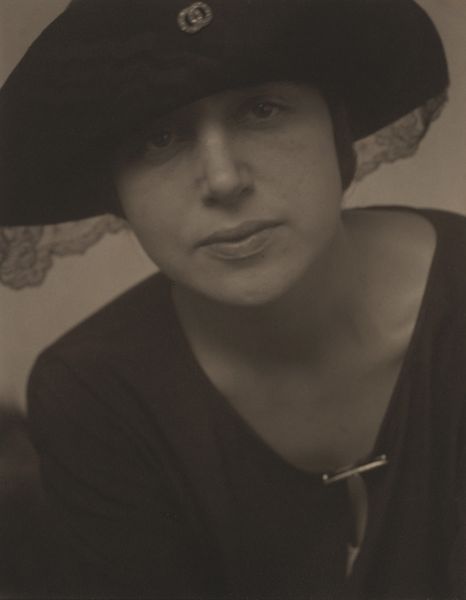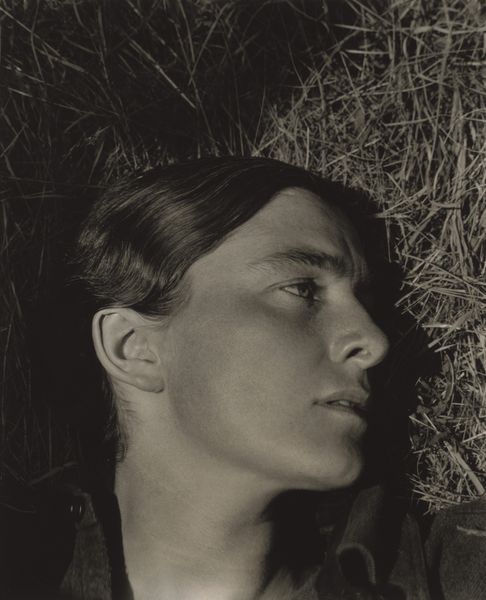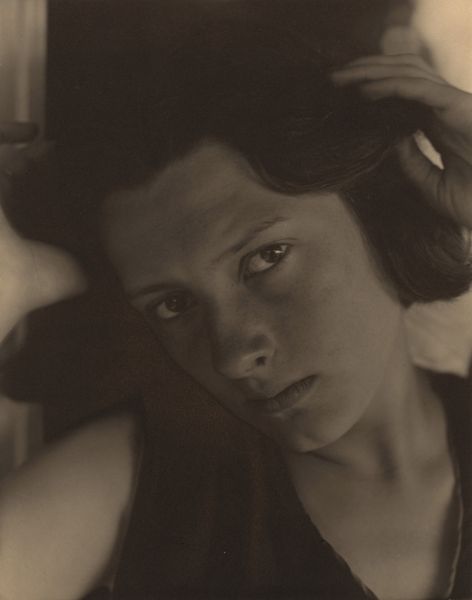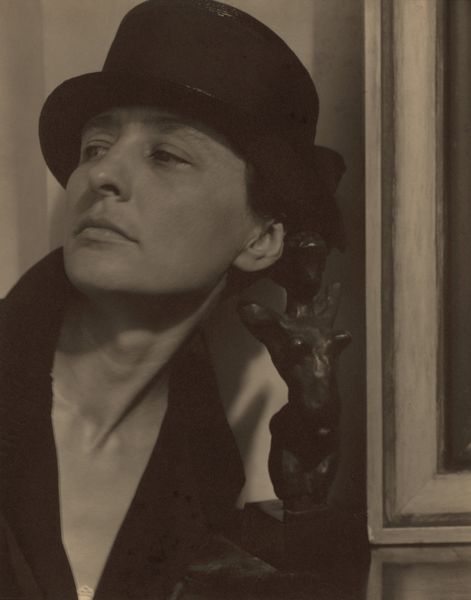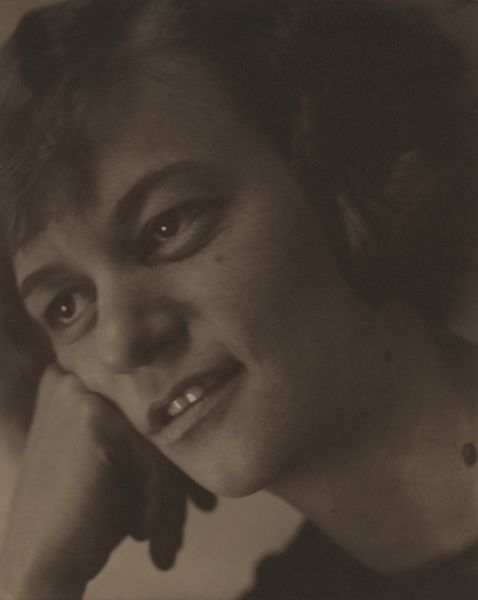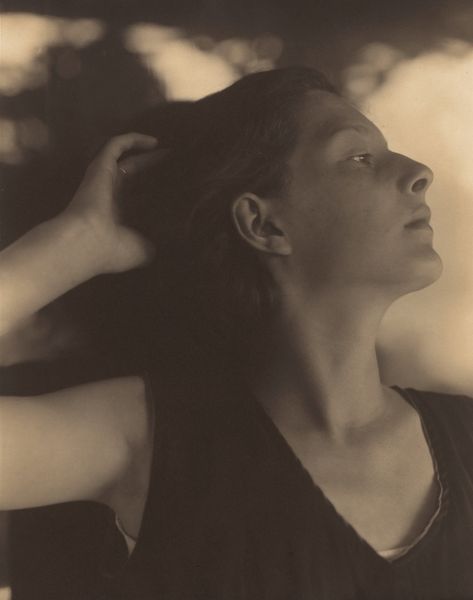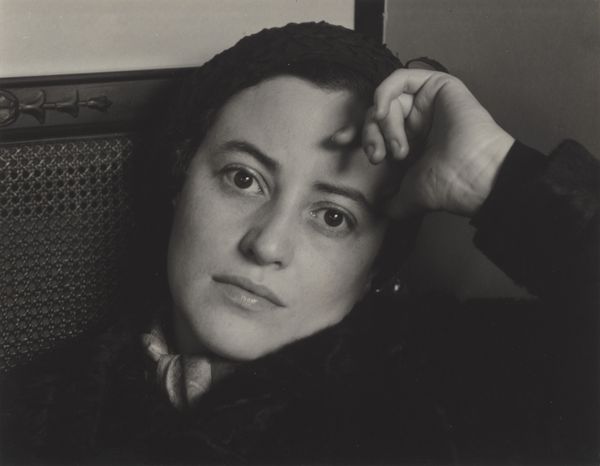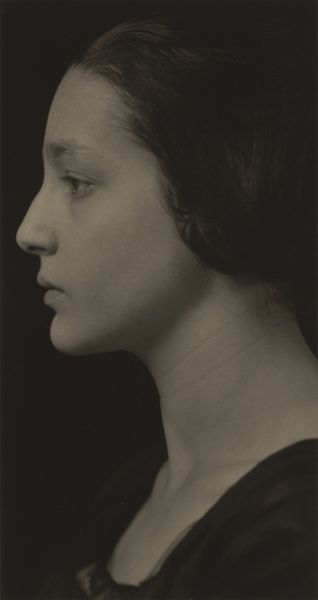
photography, gelatin-silver-print
#
portrait
#
pictorialism
#
photography
#
historical photography
#
gelatin-silver-print
#
ashcan-school
#
modernism
Dimensions: sheet (trimmed to image): 11.4 × 8.6 cm (4 1/2 × 3 3/8 in.) mount: 34.8 × 27.55 cm (13 11/16 × 10 7/8 in.)
Copyright: National Gallery of Art: CC0 1.0
Editor: This is Alfred Stieglitz’s gelatin-silver print, "Dorothy Norman," circa 1931. The profile view, the stark contrast, and the subject's serene gaze give it a really contemplative, almost melancholic feel. What strikes you about this portrait? Curator: The photograph presents Dorothy Norman, yes, but through the symbolic language Stieglitz employs, it whispers of more than just her individual likeness. Notice the head covering – almost a nun’s habit in its simplicity, yet fashionably modern. What do you think it represents in contrast to the patterned scarf? Editor: Perhaps the hat signals a kind of austerity or intellectualism, while the scarf adds a layer of bohemian artistic flair? Curator: Exactly! The tension between these symbols reflects the complexities within Norman herself – a writer, photographer, and advocate for social change. Consider Stieglitz’s intent – did he seek to capture her surface, or something deeper, something that resonates beyond a single moment? Does the composition, stark and almost severe, influence your perception of her inner world? Editor: Definitely. The angle, the sharp lines... it feels like he's stripping away artifice to get at something essential. I hadn’t considered how much these visual cues contribute to our understanding of her. Curator: And what of photography as a medium here? Isn’t it interesting how Stieglitz elevates photography from simple documentation to symbolic representation? It encourages us to question how photographic images accumulate cultural weight, how they construct and carry memory. Editor: I see that now. I was so focused on her expression, I missed how much the other visual elements add layers to the narrative. Curator: That’s the power of visual language, isn’t it? This photograph isn’t just a portrait; it's a carefully constructed collection of symbols reflecting the dynamic inner life of a modern woman, forever preserved and reinterpreted through the lens of cultural memory. Editor: This has totally changed how I view portraiture, understanding the deeper meaning within an image and cultural implications.
Comments
No comments
Be the first to comment and join the conversation on the ultimate creative platform.
